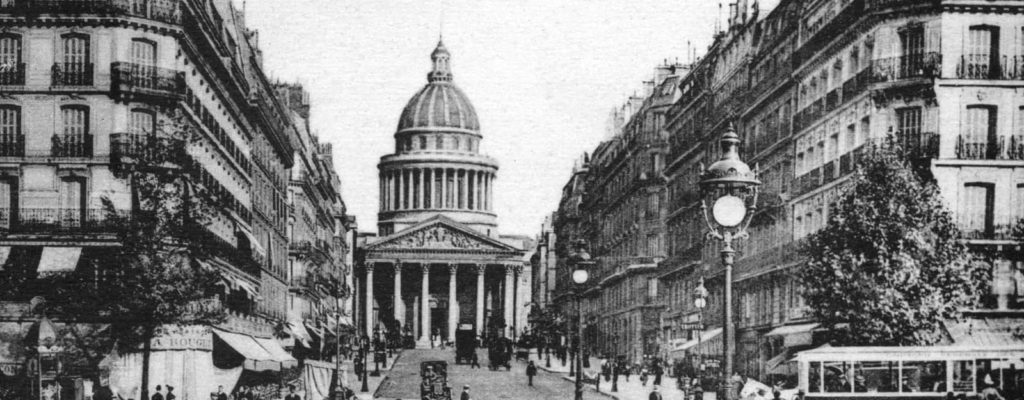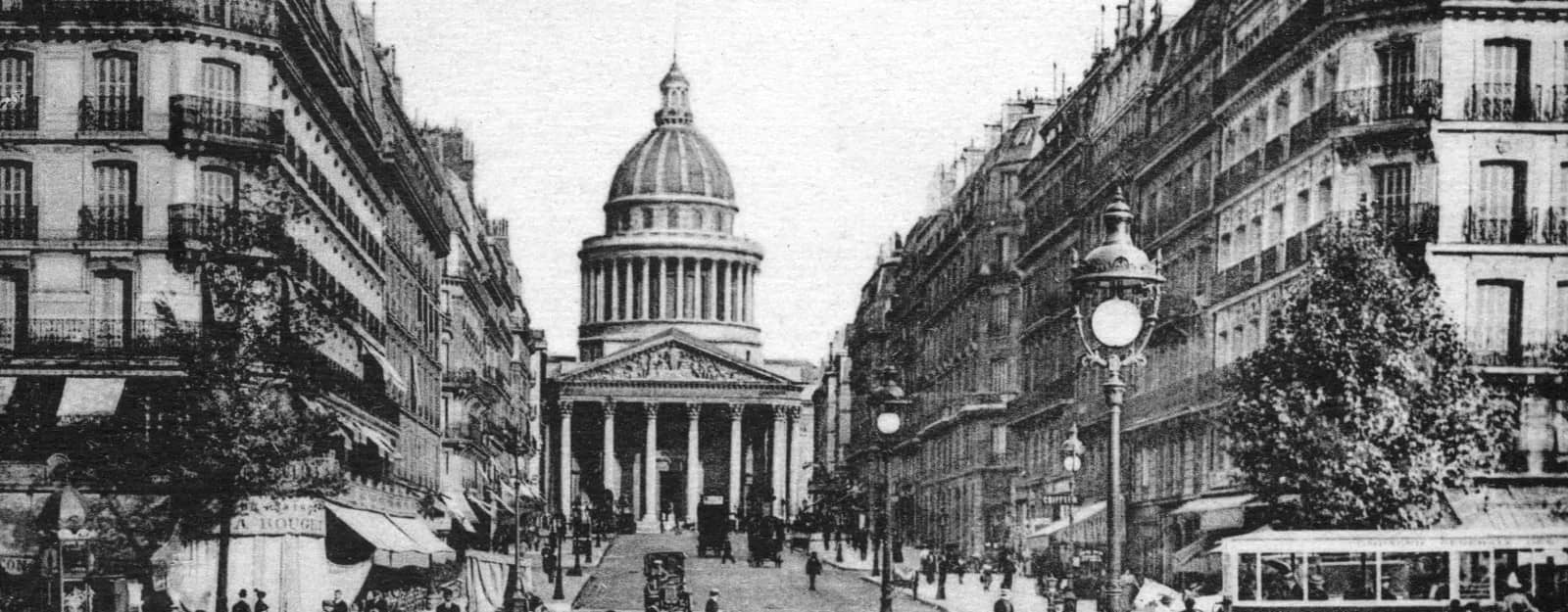
History Of The Pantheon Paris
King Louis XV vowed in 1744 that if he recovered from an illness he would replace the ruined church of Sainte-Geneviève (see entry Genevieve) with an edifice worthy of the patron saint of Paris. The Marquis of Marigny was entrusted with the work. He had sponsored the architect Soufflot, whom he chose for the construction of the new Église Sainte-Geneviève (today the “Pantheon”), a major work in the neoclassical style. The overall design was that of a Greek cross with massive portico of Corinthian columns. Its ambitious lines called for a vast building 110 meters long by 84 meters wide, and 83 meters high. No less vast was its crypt.
The foundations were laid in 1758, but due to financial difficulties, it was only completed after Soufflot’s death, by his pupil Jean-Baptiste Rondelet, in 1789. As it was completed at the start of the French Revolution, the new Revolutionary government ordered it to be changed from a church to a mausoleum for the interment of great Frenchmen, with a pediment of The Fatherland crowning the heroic and civic virtues by Jean Guillaume Moitte (replaced on the Bourbon Restoration with one by David d’Angers).
Twice since then it has reverted to being a church, only to become again a temple to the great intellectuals of France.
In 1851, physicist Léon Foucault demonstrated the rotation of the Earth by his experiment conducted in the Pantheon, by constructing a 67 meter Foucault pendulum beneath the central dome. The original iron sphere from the pendulum was returned to the Pantheon in 1946 from the Conservatoire National des Arts et Métiers. (2)
From 1906 to 1922 this was the site of the famous sculpture The Thinker.
In 2006, Ernesto Neto, a Brazilian artist, installed “Léviathan Thot”, an anthropomorphic installation inspired by the biblical monster. The art installation was in the Pantheon from September 15, 2006, until October 31 for Paris’ Autumn Festival (3).
In late 2006, a “cultural guerrilla movement” calling itself, Untergunther, completed a year-long project where they covertly repaired the Pantheon’s antique clockworks.
